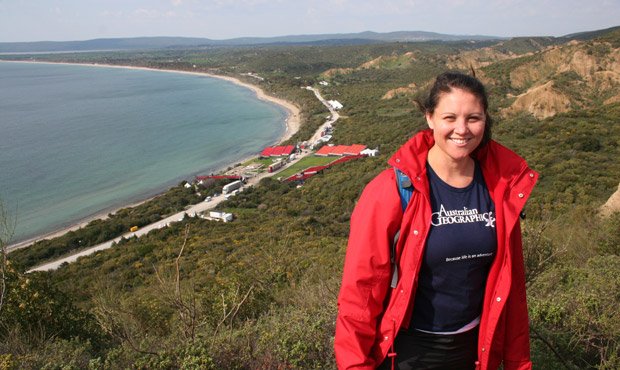Lest we forget: looking after Anzac Cove

AG subeditor Josephine Sargent is in Turkey with Conservation Volunteers Australia for Anzac Day.
STANDING ON THE BEACH of Anzac Cove, wrapped in a fleece-lined waterproof jacket, gloved hands shoved firmly in pockets, I look up. The steep, rocky hills loom down at me, as the wind whips my hair and bites at my cheeks.
Huddled before me are a group of 25 volunteers, all Australian, aged between 24 to 60-plus (let’s be polite) ready to work at the upcoming Gallipoli dawn service in Turkey and on the ground are sheets of paper, held down by stones.
Each piece of A4 paper contains the name and story of one Aussie digger who lost his life here at Gallipoli, during the 10-month campaign. Each volunteer has been assigned one of these soldiers to ‘adopt’.
There are hundreds and hundreds of graves here on the Gallipoli peninsula. We are at Ari Barnu Cemetery, which lies on Anzac Cove, and already it’s easy to become desensitised to the headstone after headstone, name after name, grave after grave.
Graeme, the fearless leader of our Conservation Volunteers Australia group, has given us these adopted soldiers, so that we can reflect, in a personal way, about the men who leaped out of ships, or from trenches or off beaches, risking life and limb to fight for their country.
For many Australians, attending the Gallipoli commemorations is a pilgrimage. Most of the other members of our tour group has a connection to the military – whether they are enlisted, have family enlisted or have known someone who has fought – or died – for Australia.
The opportunity to work behind the scenes and have the privilege of taking the time to explore the many graves, memorials and battle sites makes the experience all the more special.
My soldier was Lance Serjeant Jesse Herbert Taylor, of Kogarah, NSW. He was 36 when he died – old for the Gallipoli campaign – and was survived by a wife, Annie. Jesse died just five days before the evacuation of the Anzacs was completed. He is buried in Shrapnel Valley.
Lest we forget.

